10 Things You Should Know About Copyright Infographic
- Subject:
- Cross-Curricular
- Material Type:
- Visual Media
- Provider:
- Virginia Internet Safety Advisory Council
- Provider Set:
- 2024
- Date Added:
- 03/15/2024
10 Things You Should Know About Copyright Infographic

This is a short and to-the-point video (Students Distance Learning.mp4) from Alex Case in Loudoun County. It can give you ideas for making your own video for your division's students, and even for your teachers!

The Computer Science Office in Loudoun County Public Schools has developed this curriculum integration document to support the integration of the 2017 Virginia Computer Science Standards into core subject areas and beyond. Each CS standard was aligned to up to 3 grade level standards that made natural correlations.Additionally, many activities and resources were included to each standard to support the introduction and integration of the standard. For each of the six strands of the Computer Science Standards of Learning: Computing Systems, Networks and the Internet, Cybersecurity, Data and Analysis, Algorithms and Programming, and Impacts of Computing, we have included tiered support called "Fuel", "Spark", and "Ignite". The "Fuel" is provided to build teacher capacity and students' understanding in understanding the CS SOL. The "Spark" provides a Computer Science integrated experience into a core or speciality subject SOL. The "Ignite" section is where teachers in Loudoun County have the opportunity to share authentic learning experiences and lessons in our LCPS Computer Science Lesson Repository.This document was created as part of the Virginia K-12 Computer Science Pipeline which is partly funded through a GOVA and DHCD grant in partnership with Chesapeake Public Schools, Loudoun County Public Schools, and the Loudoun Education Foundation.

VSTE refreshed TSIPs adopted by Sussex Co. Public Schools. These documents outline our TSIP program. There are two tiers, A and B. Tier A is for returning teachers that passed with satisfactory from the previous year. Tier B is for new teachers and those returning teachers that received an unsatisfactory rating.

2024 Student application in DOCX

The Granville P. Meade Scholarship provides financial assistance to students who have achieved academically, but who are financially unable to attend college. The Granville P. Meade fund provides scholarship awards to worthy and financially disadvantaged Virginia high school seniors to attend one of Virginia's public or private colleges or universities. In the past years, each scholarship was in the amount of $2,000 per year for four years, provided the student continues to meet the scholarship requirements.Eligibility• You do not need to be a U.S. citizen to apply.• You must be a senior in high school that is attending school in Virginia (public, private, and home school all are able to apply). You must be planning to attend a postsecondary institution in Virginia (university, community college, or technical school).• There is no minimum GPA requirement; however, this scholarship is competitive in nature and, typically, recipients are those that have an above average academic record.

All students interested in applying should review the eligibility requirements and timeline for the application.

Outline of the 2024 Granville P. Meade Scholarship timeline and procedure details.

The Computer Science Office in Loudoun County Public Schools has developed this curriculum integration document to support the integration of the 2017 Virginia Computer Science Standards into core subject areas and beyond. Each CS standard was aligned to up to 3 grade level standards that made natural correlations.Additionally, many activities and resources were included to each standard to support the introduction and integration of the standard. For each of the six strands of the Computer Science Standards of Learning: Computing Systems, Networks and the Internet, Cybersecurity, Data and Analysis, Algorithms and Programming, and Impacts of Computing, we have included tiered support called "Fuel", "Spark", and "Ignite". The "Fuel" is provided to build teacher capacity and students' understanding in understanding the CS SOL. The "Spark" provides a Computer Science integrated experience into a core or speciality subject SOL. The "Ignite" section is where teachers in Loudoun County have the opportunity to share authentic learning experiences and lessons in our LCPS Computer Science Lesson Repository.This document was created as part of the Virginia K-12 Computer Science Pipeline which is partly funded through a GOVA and DHCD grant in partnership with Chesapeake Public Schools, Loudoun County Public Schools, and the Loudoun Education Foundation.
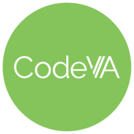
Computer Science Standard Alignment Guides are resources for teachers working to integrate computer science into their core curriculum. These guides explain the standard, give a sample activity or lesson that teaches the standard, and ways to measure student proficiency on the skill or concept.

The Computer Science Office in Loudoun County Public Schools has developed this curriculum integration document to support the integration of the 2017 Virginia Computer Science Standards into core subject areas and beyond. Each CS standard was aligned to up to 3 grade level standards that made natural correlations.Additionally, many activities and resources were included to each standard to support the introduction and integration of the standard. For each of the six strands of the Computer Science Standards of Learning: Computing Systems, Networks and the Internet, Cybersecurity, Data and Analysis, Algorithms and Programming, and Impacts of Computing, we have included tiered support called "Fuel", "Spark", and "Ignite". The "Fuel" is provided to build teacher capacity and students' understanding in understanding the CS SOL. The "Spark" provides a Computer Science integrated experience into a core or speciality subject SOL. The "Ignite" section is where teachers in Loudoun County have the opportunity to share authentic learning experiences and lessons in our LCPS Computer Science Lesson Repository.This document was created as part of the Virginia K-12 Computer Science Pipeline which is partly funded through a GOVA and DHCD grant in partnership with Chesapeake Public Schools, Loudoun County Public Schools, and the Loudoun Education Foundation.
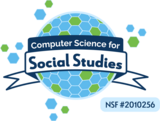
In this lesson, students engage in a historical jigsaw activity focused on westward expansion. The lesson ends with a coding project where students create “postcards” by coding with Twine, expressing the perspectives of different groups experiencing the effects of westward expansion.
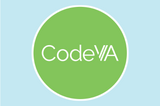
Computer Science Standard Alignment Guides are resources for teachers working to integrate computer science into their core curriculum. These guides explain the standard, give a sample activity or lesson that teaches the standard, and ways to measure student proficiency on the skill or concept.

The Computer Science Office in Loudoun County Public Schools has developed this curriculum integration document to support the integration of the 2017 Virginia Computer Science Standards into core subject areas and beyond. Each CS standard was aligned to up to 3 grade level standards that made natural correlations.Additionally, many activities and resources were included to each standard to support the introduction and integration of the standard. For each of the six strands of the Computer Science Standards of Learning: Computing Systems, Networks and the Internet, Cybersecurity, Data and Analysis, Algorithms and Programming, and Impacts of Computing, we have included tiered support called "Fuel", "Spark", and "Ignite". The "Fuel" is provided to build teacher capacity and students' understanding in understanding the CS SOL. The "Spark" provides a Computer Science integrated experience into a core or speciality subject SOL. The "Ignite" section is where teachers in Loudoun County have the opportunity to share authentic learning experiences and lessons in our LCPS Computer Science Lesson Repository.This document was created as part of the Virginia K-12 Computer Science Pipeline which is partly funded through a GOVA and DHCD grant in partnership with Chesapeake Public Schools, Loudoun County Public Schools, and the Loudoun Education Foundation.
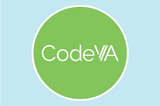
Computer Science Standard Alignment Guides are resources for teachers working to integrate computer science into their core curriculum. These guides explain the standard, give a sample activity or lesson that teaches the standard, and ways to measure student proficiency on the skill or concept.

The Computer Science Office in Loudoun County Public Schools has developed this curriculum integration document to support the integration of the 2017 Virginia Computer Science Standards into core subject areas and beyond. Each CS standard was aligned to up to 3 grade level standards that made natural correlations.Additionally, many activities and resources were included to each standard to support the introduction and integration of the standard. For each of the six strands of the Computer Science Standards of Learning: Computing Systems, Networks and the Internet, Cybersecurity, Data and Analysis, Algorithms and Programming, and Impacts of Computing, we have included tiered support called "Fuel", "Spark", and "Ignite". The "Fuel" is provided to build teacher capacity and students' understanding in understanding the CS SOL. The "Spark" provides a Computer Science integrated experience into a core or speciality subject SOL. The "Ignite" section is where teachers in Loudoun County have the opportunity to share authentic learning experiences and lessons in our LCPS Computer Science Lesson Repository.This document was created as part of the Virginia K-12 Computer Science Pipeline which is partly funded through a GOVA and DHCD grant in partnership with Chesapeake Public Schools, Loudoun County Public Schools, and the Loudoun Education Foundation.
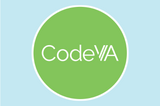
This set contains all 6th-8th Grade CS Standard Alignment Guides. The CS Standard Alignment Guides help teachers integrate computer science into their other content areas and provide background information on the standard, vocabulary, sample lesson, and integration opportunities.
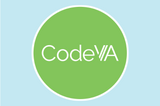
Computer Science Standard Alignment Guides are resources for teachers working to integrate computer science into their core curriculum. These guides explain the standard, give a sample activity or lesson that teaches the standard, and ways to measure student proficiency on the skill or concept.
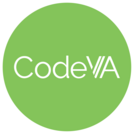
Computer Science Standard Alignment Guides are resources for teachers working to integrate computer science into their core curriculum. These guides explain the standard, give a sample activity or lesson that teaches the standard, and ways to measure student proficiency on the skill or concept.

Can you see how far you can catapult a Pom Pom? I want to see! We are going to be building a catapult from scratch. Your goal is to see if you can catapult your Pom Pom at least 3 feet.